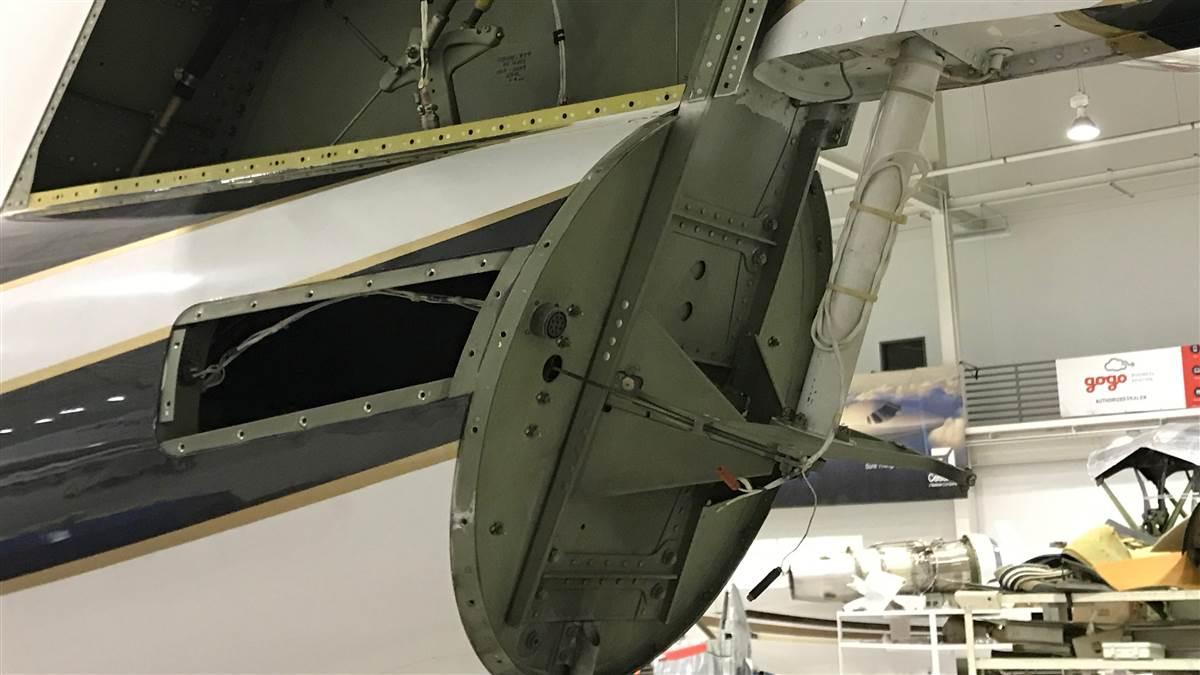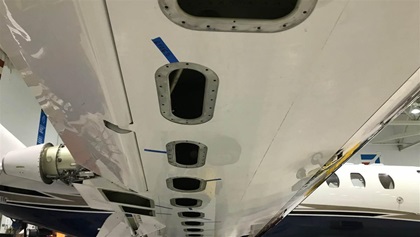The maintenance maze
The buck stops with you
By Adam Sipes
We all know that aircraft have a variety of inspection and maintenance requirements that must be completed at specified intervals to be considered airworthy.

Part of a 525-series Citation (the CitationJet, CJ, CJ1+, M2, CJ2, CJ3, and CJ4 models) fuel storage system’s inspection requires the removal of all these inspection panels—and more—in the airplane’s wings.
Photography by Adam Sipes
When you become an aircraft owner, that knowledge shifts from nice-to-know information into legal responsibility. As outlined in FAR 91.403(a), the owner or operator of an aircraft is primarily responsible for maintaining that aircraft in airworthy condition. Under Part 91, keeping a piston-powered aircraft airworthy is straightforward. Most airplanes require an annual inspection to be considered airworthy. Most aircraft also require other inspections for the pitot-static system, transponder, and emergency locator transmitter. Owners also must comply with airworthiness directives applicable to their aircraft as well as any other inspections required by regulation for commercial operators. However, as you transition into turboprops and jets, inspection requirements become more complicated and convoluted.
For starters, most turbine aircraft have what’s called an airworthiness limitations section. This section is usually found in chapter 4 of the maintenance manual and contains inspections and part replacement time limits deemed critical for safe and reliable operation. According to FAR 91.403(c), if your aircraft has an airworthiness limitations section in either the maintenance manual or instructions for continued airworthiness (ICA), you must comply with all mandatory replacement and inspection intervals outlined in those rules. Many ICAs can be found in the aircraft’s maintenance manual or in the conditions and limitations paperwork for any installed modifications completed in connection with a supplemental type certificate (STC). An STC’s compliance information is usually found on the STC’s cover sheet. Be sure to consult all of these documents to ensure all inspection and replacement requirements are accomplished. Remember, these items are mandatory even if you’re flying under Part 91.
Yet another important chapter to review is chapter 5 of your maintenance manual. That’s where you’ll find the inspection and maintenance program for your aircraft, as well as component and inspection time limits. It outlines each individual inspection cycle, when it is due, what needs to be done, and what parts need to be ordered.
It’s important to note that you not only have to comply with required inspection intervals defined by the airframe manufacturer, but also those specified for the engines, propellers, appliances, and other equipment. This usually means consulting chapters 4 and 5 for each of these components.
Navigating the complexities
 Yet another area of confusion stems from terminology. Manufacturers use different language to describe their maintenance and inspection programs. For example, some manufacturers refer to their inspection programs as phase inspections (“phases”); while others may call them A/B/C checks; and others, inspection documents (“docs”). These are all different ways of describing the same thing. Usually, inspection tasks are broken down into cycles, or hourly and/or calendar time intervals. For example, an Inspection Document 10 on a Cessna Citation 525 is performed every 36 calendar months or 1,200 hours, whichever occurs first. Often referred to as a “Doc 10,” this inspection includes a list of almost 50 tasks, from inspecting the landing gear wheel well to inspecting the fuel storage system. Upon completion of the inspection tasks, any unairworthy squawks must be fixed before releasing the aircraft for return to service. These sorts of inspections will vary greatly in cost and man-hours depending on the condition of your aircraft, where you have the inspections completed, and where you get parts. A manufacturer’s service center is likely your best bet. The Doc 10 usually takes about 250 man-hours to complete and can run about $30,000.
Yet another area of confusion stems from terminology. Manufacturers use different language to describe their maintenance and inspection programs. For example, some manufacturers refer to their inspection programs as phase inspections (“phases”); while others may call them A/B/C checks; and others, inspection documents (“docs”). These are all different ways of describing the same thing. Usually, inspection tasks are broken down into cycles, or hourly and/or calendar time intervals. For example, an Inspection Document 10 on a Cessna Citation 525 is performed every 36 calendar months or 1,200 hours, whichever occurs first. Often referred to as a “Doc 10,” this inspection includes a list of almost 50 tasks, from inspecting the landing gear wheel well to inspecting the fuel storage system. Upon completion of the inspection tasks, any unairworthy squawks must be fixed before releasing the aircraft for return to service. These sorts of inspections will vary greatly in cost and man-hours depending on the condition of your aircraft, where you have the inspections completed, and where you get parts. A manufacturer’s service center is likely your best bet. The Doc 10 usually takes about 250 man-hours to complete and can run about $30,000.
The airworthiness limitations section, found in chapter 4 of the maintenance manual, spells out components having a mandatory inspection and/or replacement schedule. For instance, the left and right main landing gear trailing link on later-model Citation 525s must be replaced every 21,100 landings. Often, the life-limited components found in chapter 4 are integrated into the inspection and maintenance program found in chapter 5.
Interestingly, chapter 4 is the only FAA-approved section of the maintenance manual. As a result, it meets the requirement defined by FAR 43.16 and 91.409(e) as “documents approved by the administrator.” Chapter 4 requirements always take precedence and priority over all other documents that refer to inspection requirements. Additionally, inspection interval limitations required in chapter 4 cannot be exceeded. For example, one Doc on a Citation CJ is due at 6,000 airframe hours, then every 2,400 hours thereafter—without exception. It consists of removing most access panels and inspecting the fuselage skin for loose or failed fasteners, cracking skin, and corrosion.
Mandatory versus optional
Determining which tasks are mandatory and which are optional leaves many owners scratching their heads. You may take your airplane to a maintenance shop or service center for a required inspection, only to find additional maintenance tasks performed. A service center may contend that tasks completed are part of the manufacturer’s maintenance program.
It’s important for you to understand the maintenance and inspection programs for your airplane—or hire someone who does.But maintenance tasks other than inspection items are not mandatory for Part 91 operators; they’re simply recommendations. For example, the Doc 10 on a Citation 525 calls for an elevator trim tab actuator inspection. This task is mandatory because it is an inspection. However, the elevator trim tab actuator free-play check is not mandatory because it is only a maintenance task. In other words, if the task calls for an inspection, it’s mandatory; if it doesn’t, it’s optional. Consult chapters 4 and 5 of your maintenance manual for specific examples.
It’s your responsibility as the owner or operator of a turbine aircraft to ensure that you comply with all the required inspections. This means it’s important for you to understand the maintenance and inspection programs for your airplane—or hire someone who does. It’s simply not enough to rely on maintenance shops, repair stations, or service centers to perform these tasks. Doing so could cost you thousands of dollars, or worse, compromise safety and compliance.
Adam Sipe is an airframe and powerplant mechanic with inspection authorization specializing in Cessna Citations. He’s also a principal in prebuy specialists The Pre-Buy Guys.


